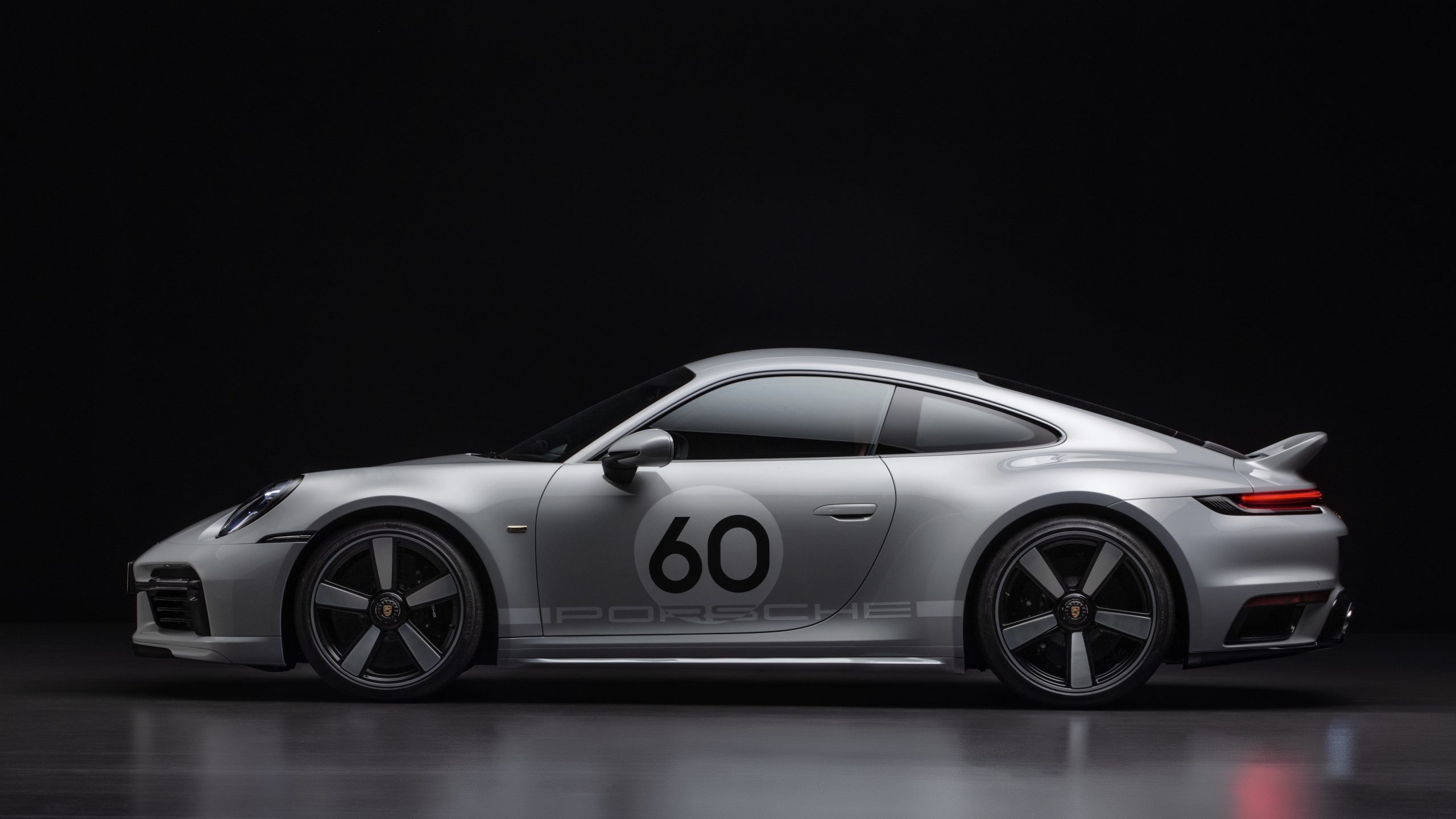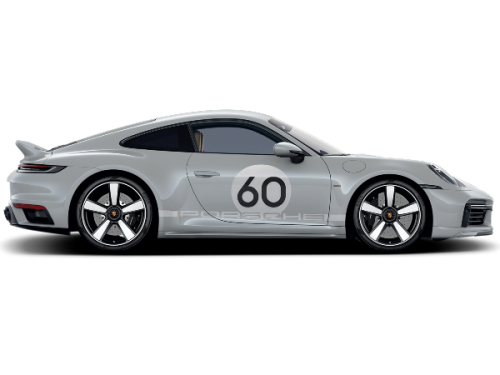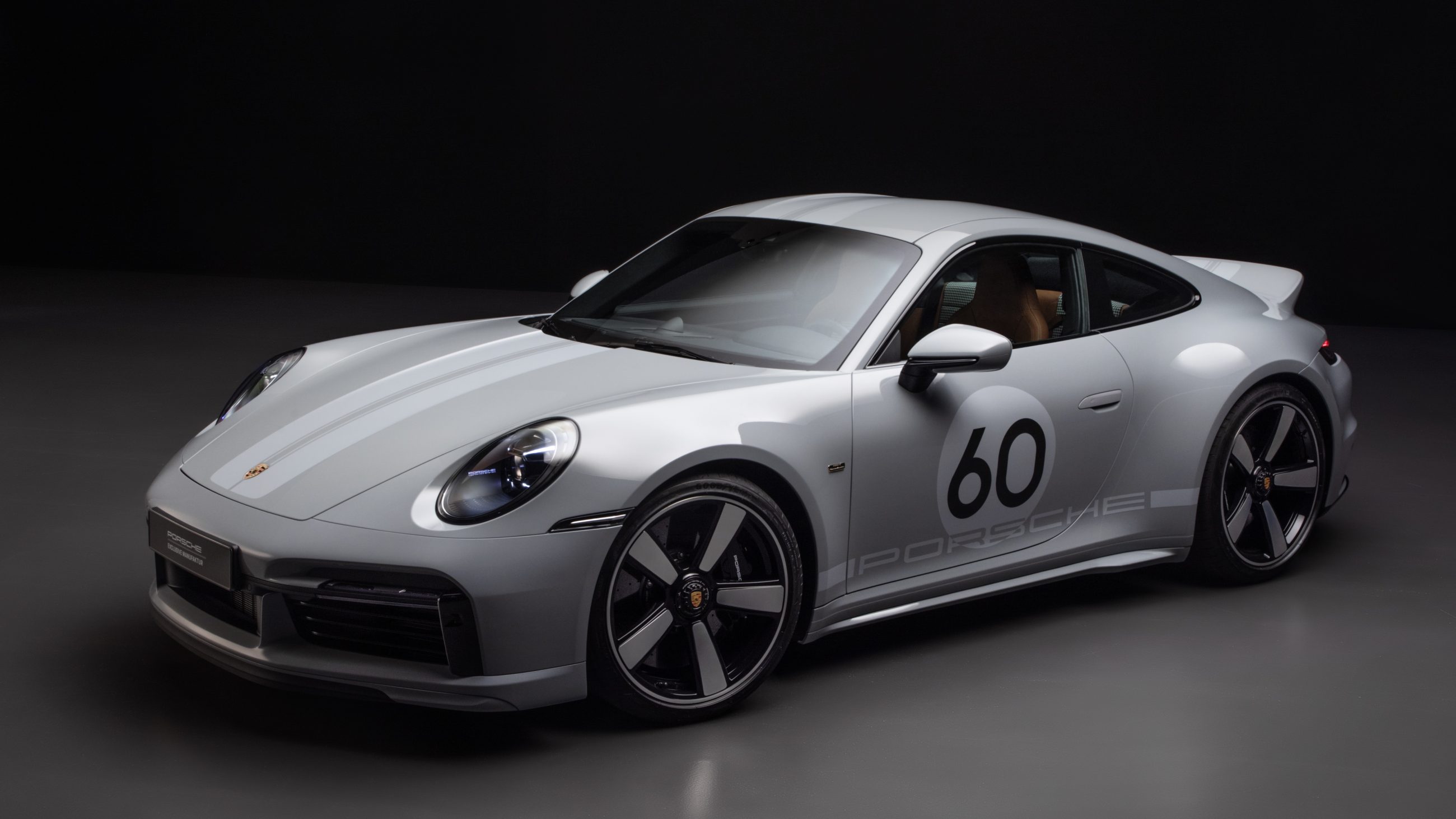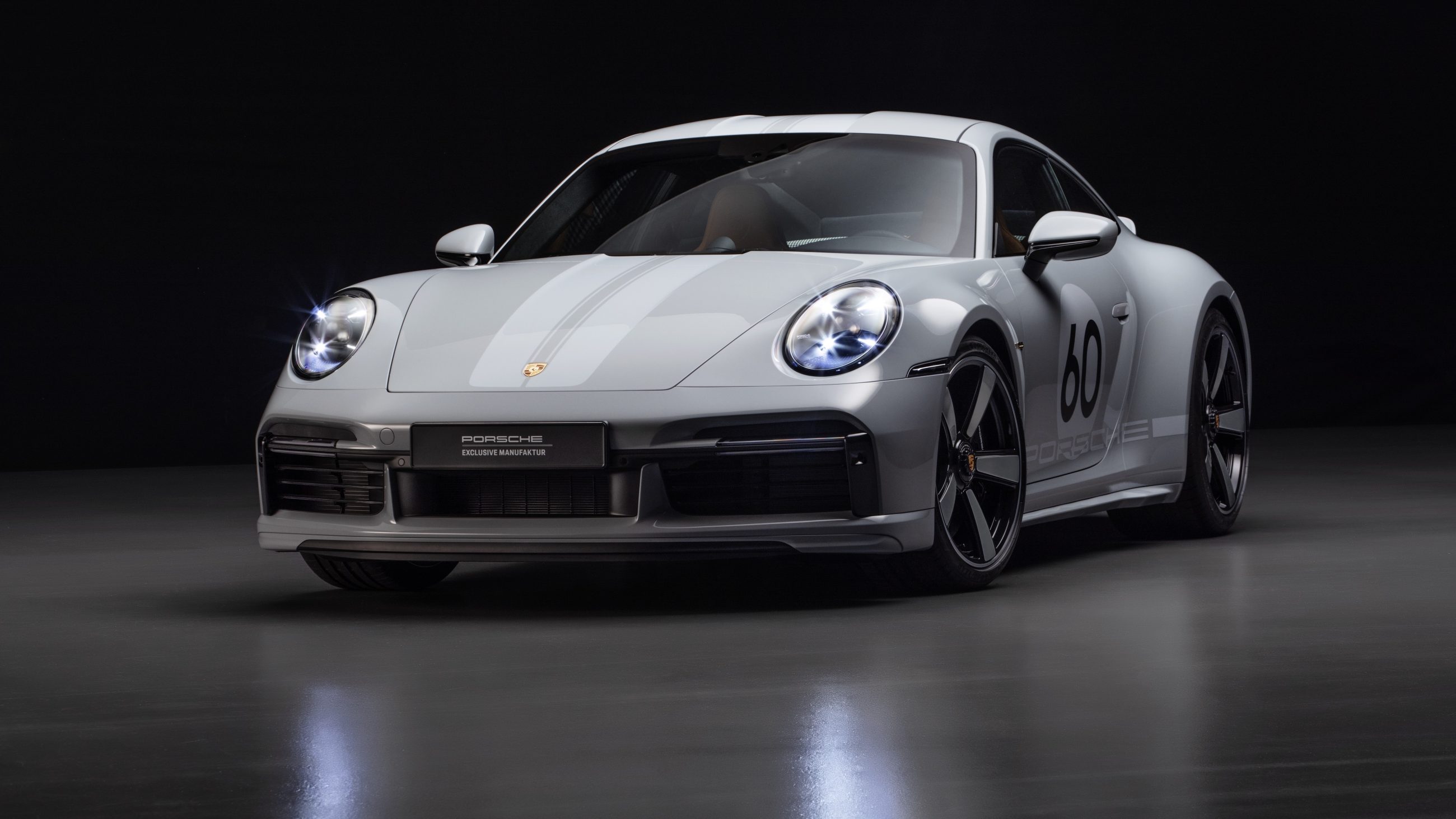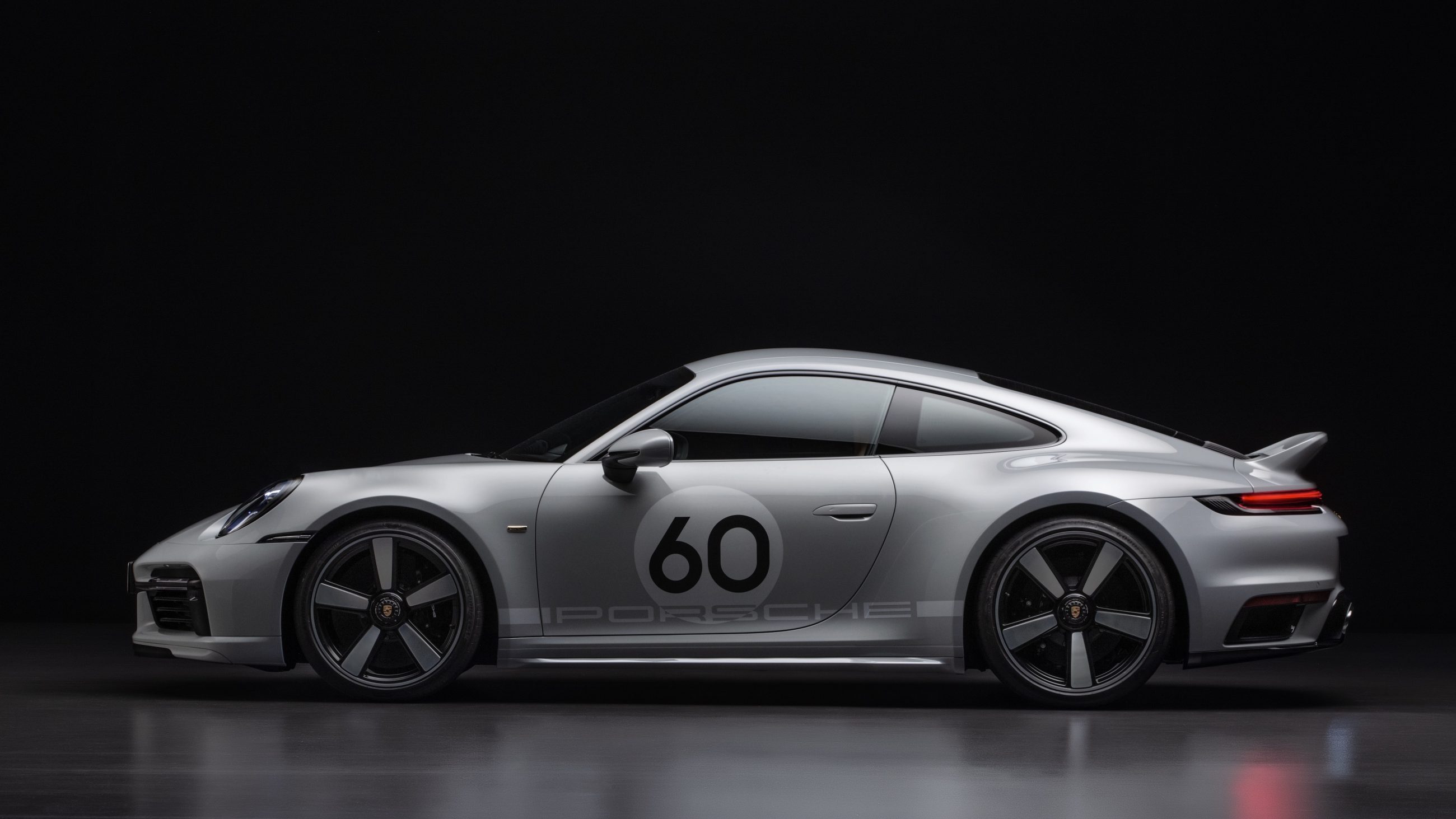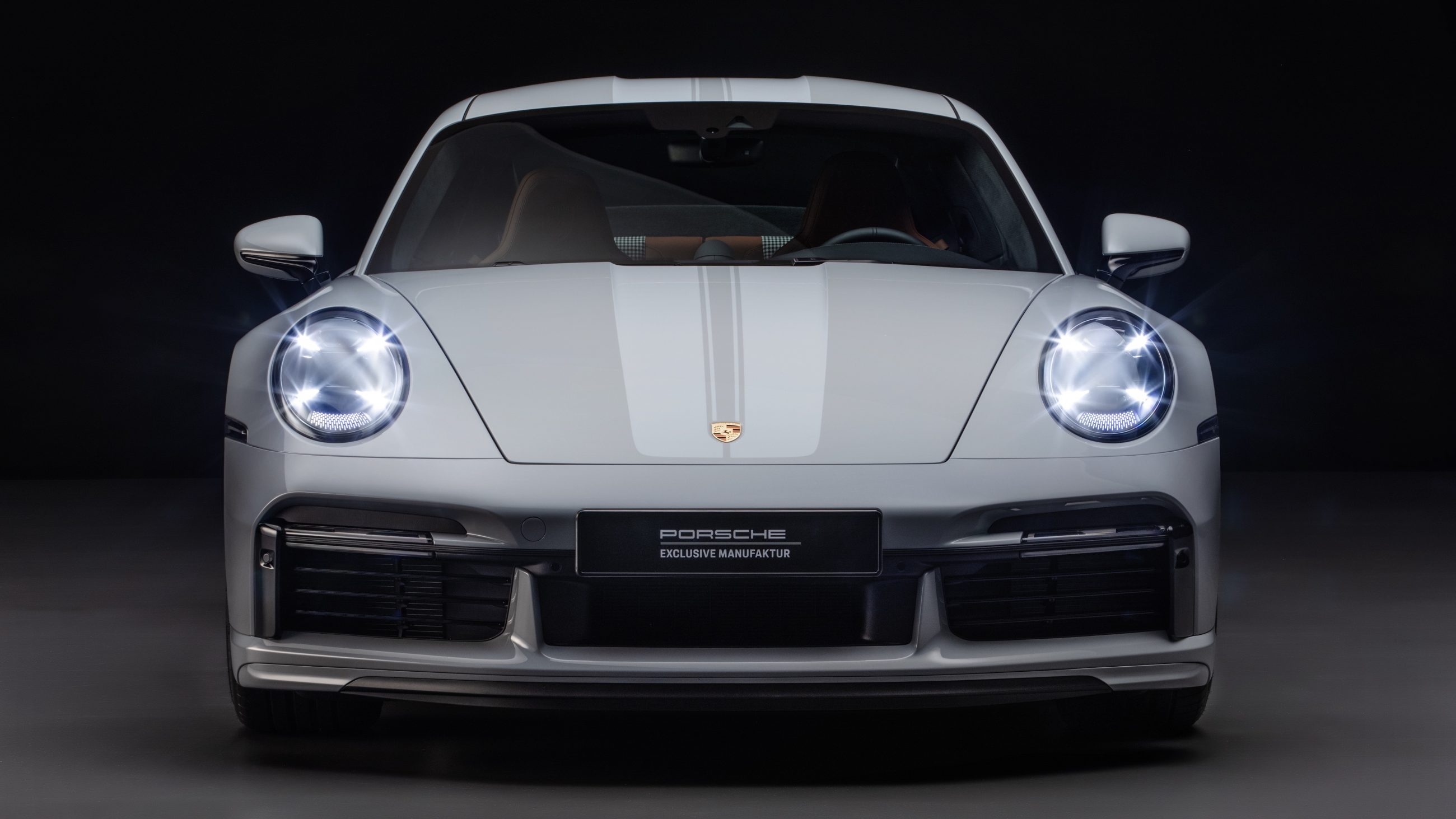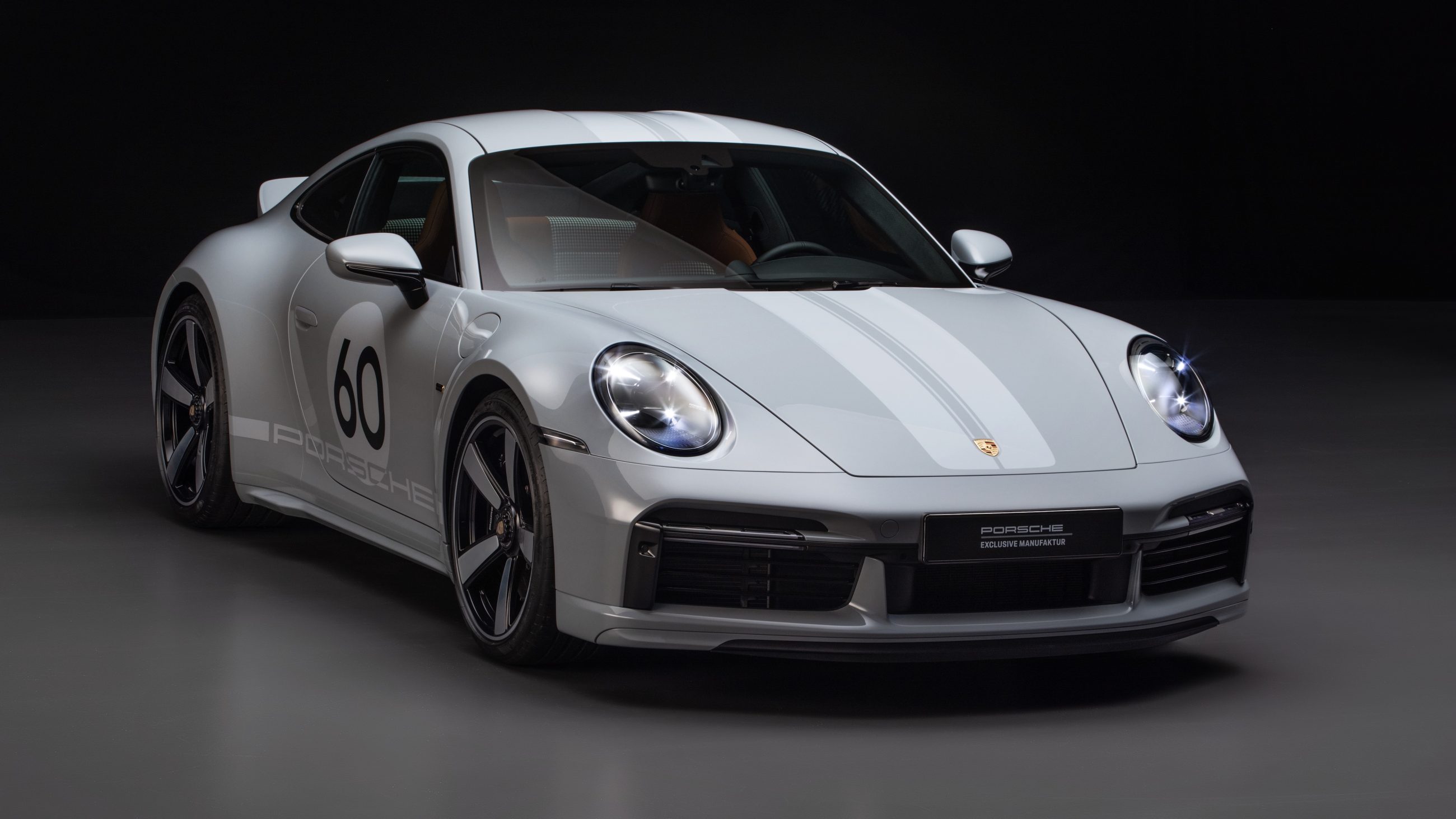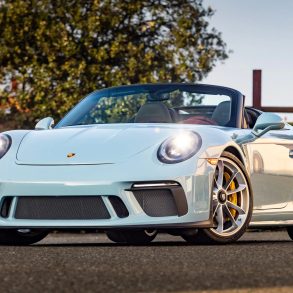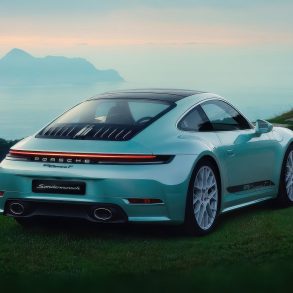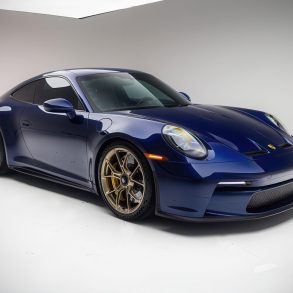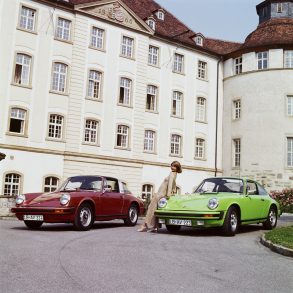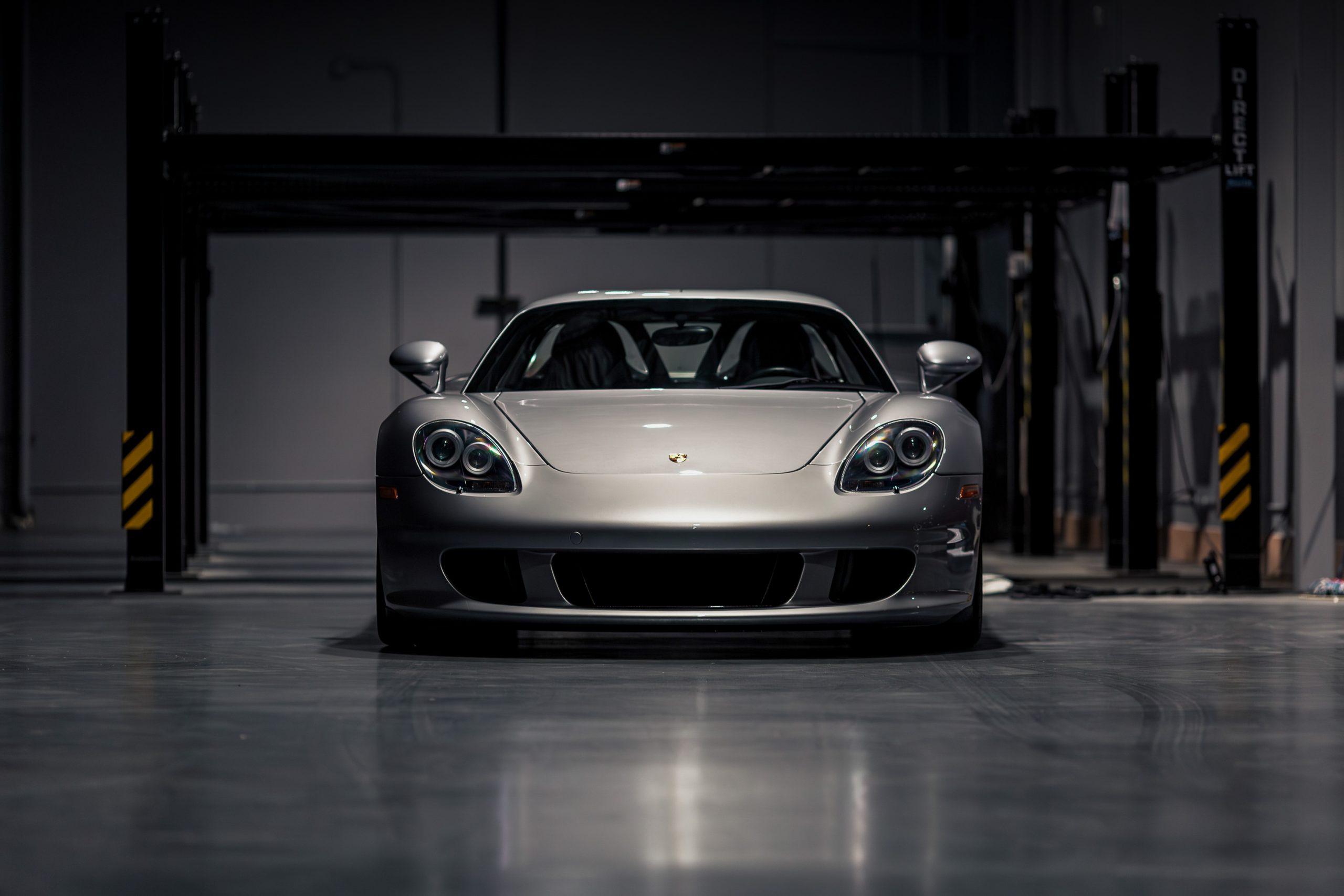2023 Porsche 911 Sport Classic (992.1) – Reviews, Pricing, Specs & Buyers Guide
Introduction: The Retro-Modern Limited Edition
The Porsche 911 Sport Classic (992.1) is one of those rare cars that combine heritage styling, limited production, and modern performance in one exclusive package. Unveiled by Porsche as part of its Heritage Design series for model year 2023, the Sport Classic revives the spirit of the 1970s 911 Carrera RS 2.7 and the earlier 997-based Sport Classic, but with all the capability of a modern wide-body 992 series 911. Its combination of rear-wheel drive, manual gearbox, twin-turbocharged engine, and distinctive styling make it a true enthusiast-oriented special edition. This ultimate guide covers its story, engineering and specs, driving character, reception, year-to-year context (2023 only, as it is a single-year 1,250-unit run), review takeaways, buying/ownership tips, and how it fits into the 911 lineup.
Porsche introduced the 911 Sport Classic on April 27, 2022 (for the 2023 model year) under its Heritage Design program. This was the second model in that series (after the 911 Targa 4S Heritage Design Edition) and represented a “throw-back with modern mechanicals” concept: a wide-body 911 based on the 911 Turbo’s platform but re-engineered for rear-wheel drive and a seven-speed manual gearbox exclusively. Porsche calls it the most powerful manual 911 ever built. Only 1,250 cars were slated for production globally, making it extremely limited.
Styling cues nod to the classic 911 Carrera RS 2.7—with ducktail spoiler, double-bubble roof, Fuchs-style wheels, strips down the flanks, and heritage badging in gold lettering. Positioned above the regular 911 Turbo S in terms of exclusivity (though not in absolute straight-line performance) and emphasizing “purist fun,” the Sport Classic is aimed at those who want manual, rear-drive 911 performance with a collector’s element and heritage appeal.
Engineering Highlights & Specifications
Powertrain & Driveline
- Engine: 3.7-litre twin-turbo flat-six (derived from 911 Turbo models) detuned for the Sport Classic. Output: 543 hp and 442 lb-ft of torque.
- Transmission: 7-speed manual only, rear-wheel drive only. No PDK, no all-wheel drive.
- Based on 911 Turbo S wide-body platform (so shares many hardware bits: brakes, chassis, wide fenders) but re-engineered for RWD and manual layout.
- Official technical PDF confirms layout, engine type, power, torque, and dimensions.
Chassis, Suspension & Brakes
- Because it inherits the Turbo S wide-body, it features the broad stance and hardware like centre-lock wheels (depending on region), large ceramic brakes (PCCB) standard.
- Adaptive dampers (PASM Sport) with lowered ride height compared to standard 911; front springs slightly softened compared to AWD Turbo S due to drivetrain changes.
- Additional driver-oriented features: Rear axle steering, PDCC (Porsche Dynamic Chassis Control) stabilisation (inherited hardware) for enhanced dynamics.
Weight / Performance Figures
- Approx curb weight: ~3,468 lbs (~1,575 kg) as per first drives.
- 0-60 mph: Approximately 3.9 seconds in Car & Driver’s test.
- Top speed: ~195-196 mph per European review sources.
- Notably, this is “the most powerful manual 911 ever built” according to Porsche.
Styling & Heritage Design Features
- Paint: Sport Grey Metallic (inspired by 356 Fashion Grey), with contrasting stripes in light Sport Grey. Other optional colours: Black, Agate Grey Metallic, Gentian Blue Metallic.
- Exterior design: Ducktail spoiler, double-bubble roof (carbon fibre), Fuchs-style centre-lock wheels, heritage badging in gold, retro side graphics (buyers can choose the number on the roundel).
- Interior: uses houndstooth cloth inserts (checkered seat cloth echoes past 911s), cognac leather/black combinations, gold creation date and edition badging. Reviewed as beautiful and distinctive.
Driving Experience
Reviewers repeatedly highlight the Sport Classic’s unique combination of modern hardware and analogue feel. Car & Driver noted the sensation of driving a “manual turbo,” with big power but rear-wheel drive only—a rare combination in today’s 911 line.
Key themes in driving usability:
- The manual gearbox is praised: solid shift feels, good pedal spacing (heel-toe friendly), and physical engagement rare in modern high-power 911s.
- Rear-wheel drive adds a sense of involvement: PistonHeads describes the “whoosh frenzy of a sleeping giant” as you prod the throttle.
- Performance is top-tier: the 543 hp and 442 lb-ft deliver serious pace, and despite the weight and broad body, the driving dynamics feel more focussed than many wide-body 911s.
- On the flip side: Some reviewers note that the ride is firm, the rear-wheel drive layout means less “mission-control” grip than AWD 911s, and the price premium is steep (see below). Auto Express calls it “eye-wateringly expensive.”
- Sound and character: The exhaust and drivetrain layout deliver a “retro” experience, not ultra-refined like some modern 911s—but that’s part of the appeal. CarThrottle says it’s “eventful with every full-throttle application.”
In summary: if you want a 911 that delivers modern capability but demands driver involvement, the Sport Classic nails it.
Reception & Reviews
- Car & Driver (2023 test) calls it “the ultimate manual 911” and gives praise for its rare combination of wide-body hardware + RWD + manual.
- Top Gear describes it as a limited-edition, 542 bhp wide-body 911 with manual and RWD, and while the styling might seem “over-excited,” the driving experience is strong.
- Auto Express verdict: “If you’re after ultimate performance in straight lines or around corners, this is not the Porsche for you. However, for a true 911 connoisseur the Sport Classic offers a distinct character all of its own … It’s eye-wateringly expensive, but is a superb modern example of the 911 archetype.”
- Hagerty magazine: “This car is perfectly executed, inside and out … the formula points to solid, old-school fun: a manual transmission and rear-wheel drive.”
In short: critics broadly love it for what it is—an enthusiast’s car first, headline numbers second; they caution the cost and remind buyers that it may not be the all-weather everyday 911.
Model Year / Production & Updates
- 2023: This is essentially a one-year production (992.1) limited run platform; the Sport Classic is produced as a single annual edition. Porsche announced the model in April 2022 for the 2023 year.
- Production limited to 1,250 units globally (all markets combined) making it rare and collectible.
- Because of its limited run and special edition nature, there are no major model-year mechanical updates publically disclosed beyond the launch. Porsche treated it as a standalone release rather than an evolving trim line.
- For buyers: the fact it is a limited run and retro-heritage design edition enhances collectability, but also means many cars are pre-sold and spec options may vary widely (buyers typically had options on interior packages, livery numbers, wheels/finishes etc).
- Relevant note: Because the 992 series is continuing into 992.2 in other trims (with hybridization in future GTS/RS models), the Sport Classic stands out as a “pure” internal combustion, manual special edition—enhancing its appeal.
Options & What to Consider
Given the exclusivity, spec matters more than usual. Key things to prioritise:
- Manual gearbox & RWD: Ensure that the car is indeed RWD only and manual; some markets might have different spec. The manual is the definitive appeal of the Sport Classic.
- Exclusive livery / heritage extras: The double-bubble roof in CFRP, ducktail spoiler, side graphics (buyers could pick a number 1–99 or omit), Fuchs style centre-lock wheels. These styling details are part of the collectible value.
- PCCB (ceramic brakes) standard: Confirm specs and condition of brake rotors/pads, especially if the car has been driven hard or on track.
- Suspension specification: PASM Sport, lowered ride height, hardware derived from Turbo S. Request full build sheet or VIN-option list.
- Interior trim & materials: Options like houndstooth seat cloth, cognac leather, gold badges, and Exclusive Manufaktur finishes. These add to the uniqueness and value.
- Paint and finish: While the standard Sport Grey Metallic with stripes is iconic, other colours (Black, Agate Grey Metallic, Gentian Blue) were available. Check finish condition and originality.
- Documentation & provenance: With limited editions, build sheets, delivery programs, and original MSRP purchase documentation add to value.
- Usability and ownership implications: While it is a capable 911, the wide body, lower ride height, rear-wheel drive and manual gearbox make it more driver-focused and less about effortless daily luxury. Evaluate whether that fits your use case.
- Resale / collectibility: Given the limited run, exclusivity is strong. However, one reviewer on Reddit pointed out that the steep price vs spec of mainstream 911s might be a factor:
“It uses the 911 Turbo 3.7 L TT H6 engine, tuned for 542 horsepower … And it starts at $272k… you could literally get a 992 GT3, and a 992 GTS for the same price as a fully optioned out Sport Classic…”
Buyers should therefore view the Sport Classic first as a statement and enthusiast experience rather than pure value.
Ownership Experience & Practicalities
Daily usability: The Sport Classic is usable as a road car but has some trade-offs. The ride is firm, the wide body may limit access/parking in tight spaces, the manual demands more from the driver compared to the mainstream 911 PDK variants. If you seek maximum comfort or automated convenience, a regular 911 might be more suitable.
Driving reward: If you appreciate manual shifts, rear-wheel dynamics, and heritage styling, the Sport Classic delivers something rare: one of the few modern 911s with a serious manual option, wide-body performance hardware, and heritage cues built-in.
Maintenance & running costs: As a limited edition, parts may cost more (special badges, unique trim). Brakes, tires, servicing for Turbo-derived components and wide body chassis may incur premium costs.
Investment/collectibility: Limited numbers, manual gearbox, and heritage styling all support collectible appeal. Ensure service history, original configuration, and minimal modifications to maximise value.
Resale caution: While many view it as a collector piece, you should not presume massive appreciation overnight. The spec (manual RWD wide-body 911) is appealing but niche. Use rational buying decisions.
How It Fits Into the 911 Lineup
Within the 992 series, the Sport Classic sits at the intersection of performance, heritage, and exclusivity:
- Below the Turbo S in all-wheel drive and highest straight-line pace, but offers a manual RWD experience the Turbo S does not.
- Above the regular 911 Carrera variants in terms of exclusivity, performance hardware and collectibility.
- Unlike the GT3/GT3 RS models, which prioritise track performance and naturally aspirated engines (for the RS), the Sport Classic is twin-turbo but emphasises manual engagement and retro styling rather than outright track supremacy.
- For enthusiasts who value driving feel, manual involvement, and heritage nods more than fastest lap times, the Sport Classic may hit the sweet spot.
Verdict
The 911 Sport Classic (992.1) is a car that whispers “collector’s gem” and roars “driver’s car.” It delivers modern 911 performance wrapped in retro cues and manual transmission delight, all in a limited-edition package. If you’re searching for a 911 that stands out, offers manual engagement, rear-wheel drive and heritage styling, then this is one of the most compelling options of the era.
However, that appeal comes at a premium: you pay for exclusivity, manual layout and styling rather than pure performance metrics alone. If you want maximum horsepower, all-wheel drive or easiest possible daily usability, you might choose differently. But if you want something special, with a soul distinct from the regular 911 line, the Sport Classic is hard to beat. For the right buyer—someone who wants to drive, enjoy the manual shifts, relish the retro details and savour the exclusivity—this is one of the finest modern 911s Porsche has crafted.
What We Said At Launch
In 2010, Porsche released the original Type 997 911 Sport Classic. Limited run, a ducktail spoiler, a double-bubble roof hinting at its motorsport heritage, and a grey paint scheme that was both inoffensive and pleasing at the same time made it a very desirable car. Underneath, it was a 2010 911 Carrera S, tweaked and tuned to give the Sport Classic a little something special, and it proved to be a great idea. Porsche has decided that the idea of the Sport Classic was just too good to only happen once. Enter the 2023 Type 992 911 Sport Classic.
The new 911 Sport Classic is the second of four collector’s items that Porsche has presented from its Heritage Design strategy. A total of 1,250 examples of the limited-edition model by Porsche Exclusive Manufaktur will revive the style of the 1960s and early 1970s. While the original was a Carrera S, this time around, the power and handling come from a much feistier car, the Type 922 Turbo S. Returning is that amazing grey paint, that swooping ducktail spoiler, and the double-bubble roof.
Like its immediate predecessor, the 997-based 911 Sport Classic presented in 2009, the appearance of this model is inspired by the original 911 (1964 – 1973) and in particular the 1972 911 Carrera RS 2.7.
Porsche Design has also created a high-quality chronograph exclusively available to drivers who purchase the collector’s edition vehicle. The watch seamlessly picks up on numerous details from the new 911 Sport Classic design. As part of the Heritage Design Classic package, selected interior elements of the new 911 Sport Classic will also be available for most current 911 models.
“The Heritage Design models represent the more emotionally driven concepts of the Porsche product strategy,” says Alexander Fabig, Head of Customisation and Classic. “This unique approach sees the Style Porsche design department working with Porsche Exclusive Manufaktur to reinterpret iconic 911 models and equipment from the 1950s through to the 1980s and to revive design features from those decades.”
Reinterpreting historical design elements includes giving the Sport Classic a wide body. The wide body – otherwise reserved for the 911 Turbo models – a fixed rear spoiler in the style of the legendary ‘ducktail’ Carrera RS 2.7 and the double-bubble roof underscore the distinctiveness of the new 911 Sport Classic.
As with the first 997-generation 911 Sport Classic launched in 2009, the designers were inspired by the Fashion Grey paintwork of the early Porsche 356 when choosing the exclusive paint finish for the new limited-edition model. “The new 911 Sport Classic is the first vehicle to feature Sport Grey Metallic paintwork,” says Michael Mauer, Vice President Style Porsche. “Grey is never boring, quite often a statement and always cool.” As an alternative to the exclusive Sport Grey Metallic finish, the new 911 Sport Classic is also available in solid Black, Agate Grey Metallic or Gentian Blue Metallic. Twin stripes painted on the bonnet, roof and rear spoiler in light Sports Grey emphasise the car’s sporty design.
In the interior, the iconic Pepita houndstooth pattern can be found on the door panels and seat centres, while two-tone, semi-aniline leather upholstery in Black/Classic Cognac provides an elegant contrast with the exterior colour.
The 3.7-litre, twin-turbo flat-six engine transfers 405 kW (550 PS) of power to the road, placing the 911 Sport Classic between the 911 GTS and 911 Turbo from a performance perspective. The engine is based on the options available for the current 911 Turbo models. Variable turbine geometry (VTG) and wastegates help to achieve the superior power delivery. The process air intake is a key feature of the 911 Sport Classic concept: the air is drawn in via ducts under the rear spoiler. As a result, this limited-edition model does not feature air intakes in the rear side panels like normal Turbo models.
The boxer engine is coupled with a seven-speed manual gearbox. The 911 Sport Classic is the most powerful manual 911 available today. The gearbox has an auto-blip function that compensates for speed differences between the gears with a brief burst of revs when shifting down. The shortened shift lever provides a quick shift action and a crisp feel.
The standard sports exhaust system has been specially modified to suit the model and provides an even more emotive sound thanks to the fact that some of the car’s interior insulation also has been removed.
The suspension, based on that of the 911 Turbo and 911 GTS models, meets high performance requirements: thanks to the standard Porsche Active Suspension Management (PASM), its shock absorbers respond to dynamic changes at lightning speed. PASM is combined as standard with the sports suspension, which features a ride height that is lowered by 10 millimetres. The 911 Sport Classic features rear-wheel drive, meaning the axle load at the front is lower than on all-wheel drive models. For this reason, the Porsche suspension engineers have slightly reduced the spring rate on the front axle. The steering system, including the standard rear-axle steering, has also been modified especially for the 911 Sport Classic.
The Porsche Ceramic Composite Brake (PCCB) is part of the standard equipment for this vehicle. The brake callipers are painted in High-Gloss Black and feature a white Porsche logo.
The 60s are back. The style-defining elements of the interior package include many features also found in the 911 Sport Classic, including the two-tone leather interior in Black/Classic Cognac (semi-aniline leather) and the houndstooth fabric, a legendary design that adorns the seats and door mirrors. The classic layout of the cockpit dials and the historic Porsche crest are also included.
The most significant design elements can be seen at the rear of the car. Here, the wider rear fenders of the 911 Turbo gain even more visual emphasis. Where those panels usually have large cutouts for air intakes associated with the 911 Turbo, the 911 Sport Classic has no such intakes. This creates a large, smooth surface and a very clean appearance. It might seem like a small change, but deleting the intakes required significant engineering work, and new tooling to stamp the panel, which runs from underneath the front of the car doors to the rear of the vehicle. Due to the eliminated air intakes, ducts underneath the ducktail spoiler channel combustion air to the engine while charge air continues to route through the grille above the engine for cooling. Finally, a large ducktail spoiler formed from CFRP gives a flourish of classic design DNA reminiscent of the 1972 and 1973 911 Carrera RS 2.7.
“It’s not just the look of the 911 Sport Classic that makes it special. Its extensive technical modifications are some of its most striking features. For example, the 3.7-litre, twin-turbo flat-six engine, rear-wheel drive and seven-speed manual gearbox combine to form a powertrain that is currently unique in the Porsche portfolio,” says Frank-Steffen Walliser, Vice President Model Line 911 and 718. “The sports suspension with lowered ride height and vehicle-specific tuning deliver excellent lateral dynamics when cornering.”
Pictures
Videos Reviews
Official Press Release
04/28/2022
Return of the ducktail: 2023 Porsche 911 Sport Classic revealed
Atlanta, Georgia. The 911 Sport Classic is back, and this time it is coming to the U.S. market. Featuring the distinctive and purpose-driven ducktail spoiler that pays tribute to the 911 Carrera RS 2.7 of the early 1970s, production of the new iteration is limited to 1,250 examples worldwide.
This new, limited-production model is a true driver’s car. It features a unique powertrain to complement its special design, which pays homage to past Porsche models. This is also the second model borne of the Heritage Design strategy, which began with the 911 Targa 4S Heritage Design Edition in 2020.
Manual transmission, rear-wheel drive, and 543 hp
The new 911 Sport Classic is based on the 911 Turbo S, benefitting from its wide-body layout. Unlike the 911 Turbo models, the Sport Classic is available exclusively with a seven-speed manual transmission powering the rear wheels. Its engine, generating 543-hp and 442 lb.-ft. of torque, is the same 3.7-liter twin-turbo flat-six found in the 911 Turbo models with revised engine mapping to deliver output compatible with the manual transmission. That combination also makes this the most powerful 911 with a manual transmission currently available.
Because the new model is based on the 911 Turbo S, it too features a comprehensive list of high performance equipment. Porsche Ceramic Composite Brakes (PCCB) with calipers in black, Porsche Dynamic Chassis Control (PDCC), Rear Axle Steering, the Sport Chrono Package, and a specially modified Sport Exhaust system are all included as standard.
Porsche Active Suspension Management (PASM) Sport is also standard and lowers the ride height by 10 millimeters. Due to the fact that this is a rear-wheel drive model, the front axle spring rates are slightly decreased by comparison to the all-wheel drive 911 Turbo S.
Despite its undeniable sports car pedigree, the 911 Sport Classic is designed with driver enjoyment in mind and while it’s certainly up to the task of turning quick track laps, this limited-edition model emphasizes style and driving pleasure above all else.
Second Heritage Design Edition model as part of Heritage Design strategy
This is the second in a series of four Heritage Design models where the 911 Targa 4S Heritage Design Edition was the first. The 911 Sport Classic shares certain design traits with that model including a heritage inspired Porsche crest nearly identical to the version from 1963, badges and PORSCHE lettering finished in real gold and special Exclusive Manufaktur badges on the front quarter panels. Finally, a Porsche Heritage badge fixed to the intake grille at the rear references the Porsche 356 badge that was awarded in the 1950s when a vehicle reached the 100,000 kilometer mark.
A special twist on classic style
Its striking body is based on the 911 Turbo, but with several elements that are unique including Sport Grey Metallic paint and painted contrasting stripes in light Sport Grey. Drawing inspiration from Fashion Grey, a color first applied to the Porsche 356, this color was created for the new 911 Sport Classic. Customers may also specify the 911 Sport Classic in Black (non-metallic), Agate Grey Metallic, or Gentian Blue Metallic.
Many design elements of the new 911 Sport Classic are unique to the limited model. Starting with the front, a fixed spoiler lip and LED-Matrix Design headlights in Black contribute to its purposeful appearance. The carbon fiber reinforced plastic (CFRP) hood – not offered on the 911 Turbo models – dips in the center. That indentation complements a CFRP double-bubble roof that is also special to the model and a design continuance of the first 911 Sport Classic dating back to the Type-997 generation.
Graphics along the sides further distinguish the car. These include PORSCHE script and a white lollipop that customers can specify with digits between 1 and 99 at no additional cost. These are intentionally applied as decals rather than paint so they may be removed in the future should the owner prefer to do so.
The 911 Sport Classic wheels, too, are special and unique to this car. As a modern re- interpretation of the Fuchs design, they are another nod to Porsche heritage. In this case, they use a center lock hub and measure 20 / 21 inches front and rear with tires measuring 255/35 ZR20 and 315/30 ZR21.
The most significant design elements can be seen at the rear of the car. Here, the wider rear fenders of the 911 Turbo gain even more visual emphasis. Where those panels usually have large cutouts for air intakes associated with the 911 Turbo, the 911 Sport Classic has no such intakes. This creates a large, smooth surface and a very clean appearance. It might seem like a small change, but deleting the intakes required significant engineering work, and new tooling to stamp the panel, which runs from underneath the front of the car doors to the rear of the vehicle. Due to the eliminated air intakes, ducts underneath the ducktail spoiler channel combustion air to the engine while charge air continues to route through the grille above the engine for cooling. Finally, a large ducktail spoiler formed from CFRP gives a flourish of classic design DNA reminiscent of the 1972 and 1973 911 Carrera RS 2.7.
An interior with classic ambiance
The interior is equally as special as the exterior with materials meant to call back the 1960s and early 1970s including seat centers and door panels with Pepita cloth upholstery. The standard interior of this model uses semi-aniline leather in black and Classic Cognac. This is the first time since the 918 Spyder that Porsche has used this particularly supple and natural feeling grade of leather. A single-tone black leather interior is also optionally available.
Open-pore, dark Paldao wood trim is also standard equipment in this car as a contrast to the light Classic Cognac color. A badge on the passenger side of the dashboard above the glovebox enumerates each example in the 1,250-unit production run.
Little details throughout the interior set this car apart. The central, analog tachometer also provides retro style with a white needle and scale markings alongside green numbers and accents. The Sport Chrono clock in the dashboard gets the same treatment. The center console lid is embossed with the Porsche Exclusive Manufaktur logo, while the headrests are embossed with the Porsche Crest. The door sill plates are also specific to this model, featuring the 911 Sport Classic logo. The sun visors, steering column and even the air vent slats are upholstered in leather. Perforated Race- Tex fabric makes up the headliner and covers the A-, B- and C-Pillars.
In addition to a owning a limited-edition model, 911 Sport Classic owners become eligible to purchase a unique watch from Porsche Design. The dial on the Chronograph 911 Sport Classic is configurable to match the vehicle. One option is a matte black Heritage Design dial. The green digits and scale markings, and the white hands are based on the tachometer in the vehicle. Alternatively, the watch dial is available with either the Sport Classic stripes in light Sport Grey or Pepita.
Like the Porsche logo at the rear of the car or the badge in the interior, the Porsche Design logo on the dial is made of gold. There is more gold-colored lettering on the seconds dial, which reads “911 Sport Classic Lim. Series.”
The design of the winding rotor draws inspiration from the wheels of the vehicle, and includes a cover that looks like the center-lock nut. It also bears the classic Porsche crest. The two wristbands included in the set – one in Black, one in Classic Cognac – also draw parallels with the vehicle. They are made from the same leather as the upholstery in the vehicle interior and feature an embossed “911.”
Technical highlights of the Chronograph 911 Sport Classic:
- Two-tone housing made of lightweight, durable titanium
- Werk 01.200 Porsche Design mechanical chronograph calibre
- Certified by the COSC (Contrôle Officiel Suisse des Chronomètres – the official
- Swiss chronometer testing institute)
- With flyback function: start, stop and reset instantly with a single action
- Sapphire crystal with a hard coating and sevenfold anti-glare properties
- Ability to switch wristbands with the quick-change system
Like all watches by Porsche Design, this special model is produced at the dedicated Porsche watch factory in Solothurn, Switzerland.
The 911 Sport Classic will be available in the United States as part of the 2023 model year. Dealer arrival is expected in late 2022. Pricing information will be announced closer to market arrival.


